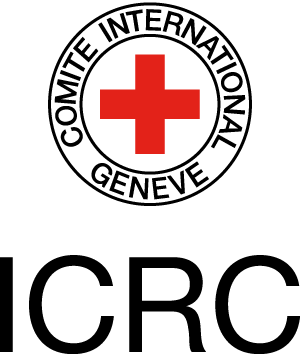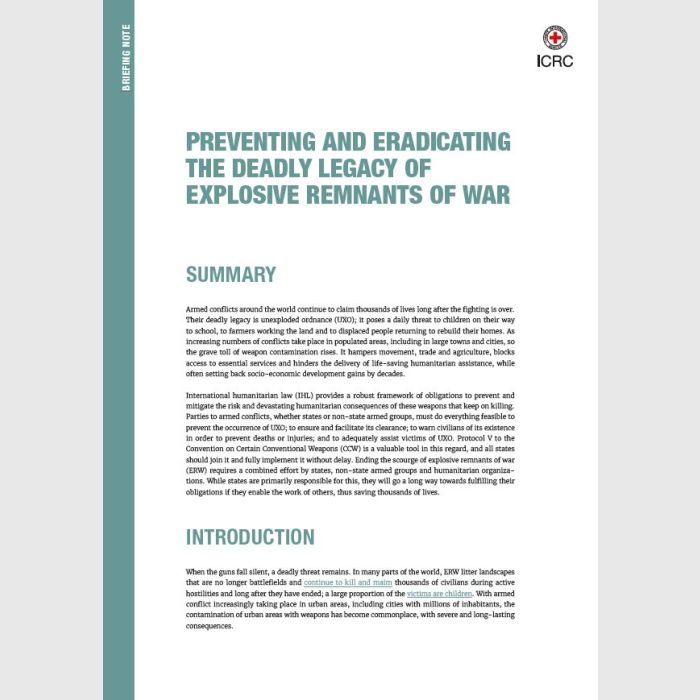We use cookies to make your experience better. To comply with the new e-Privacy directive, we need to ask for your consent to set the cookies. Learn more.
Preventing and eradicating the deadly legacy of explosive remnants of war
Armed conflicts around the world continue to claim thousands of lives long after the fighting is over. Their deadly legacy is unexploded ordnance; it poses a daily threat to children on their way to school, to farmers working the land and to displaced people returning to rebuild their homes. As increasing numbers of conflicts take place in populated areas, including in large towns and cities, so the grave toll of weapon contamination rises. It hampers movement, trade and agriculture, blocks access to essential services and hinders the delivery of life-saving humanitarian assistance, while often setting back socio-economic development gains by decades.
International humanitarian law (IHL) provides a robust framework of obligations to prevent and mitigate the risk and devastating humanitarian consequences of these weapons that keep on killing. Parties to armed conflicts, whether states or non-state armed groups, must do everything feasible to prevent the occurrence of unexploded ordnance; to ensure and facilitate its clearance; to warn civilians of its existence in order to prevent deaths or injuries; and to adequately assist victims of unexploded ordnance. Protocol V to the Convention on Certain Conventional Weapons (CCW) is a valuable tool in this regard, and all states should join it and fully implement it without delay. Ending the scourge of explosive remnants of war (ERW) requires a combined effort by states, non-state armed groups and humanitarian organizations. While states are primarily responsible for this, they will go a long way towards fulfilling their obligations if they enable the work of others, thus saving thousands of lives.


